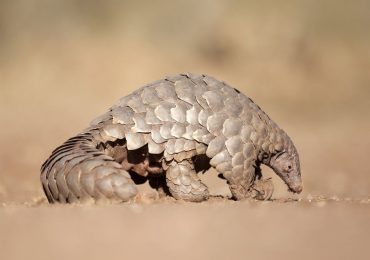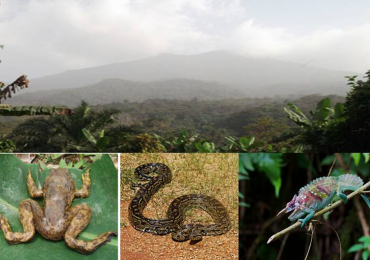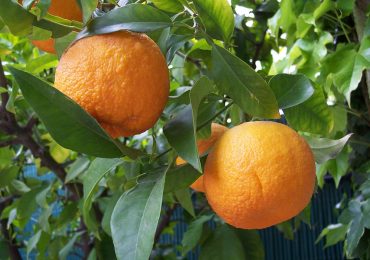Throughout its modern history, Africa, and Cameroon, of course, has been the end-users if not the Guinea pig for scientific discoveries, inventions and technological innovations; all sold from overseas laboratories and the industrial, social and economic dustbins of Europe and America.
By Azore Opio

Rather than address key food security issues as well as ownership of land, its management, degradation and replenishment, farmer-grazier conflicts, the collapse of agricultural extension services, crippling competition from imports of processed/GM foods and supplements along with agricultural inputs plus a weak market for farm produce, the Cameroon government has chosen to cuddle quick-fix GMOs, despite misgivings expressed by the scientific community.
Genetically modified organisms (GMOs). Take one part of a new gene from another organism and add it to its existing gene and you have given it a new characteristic.
GMOs are no new off-spring of biotechnology. Its narrative goes back as far as the 80s and presents contrasting arguments.
“Genetically modified organisms are organisms which have received a piece of gene from a different organism. For example, you can receive a gene coming from an animal and you insert the gene into a plant and that plant then becomes genetically modified. Or you can take a gene from a plant and put it in another plant that originally did not have that gene and that plant now becomes genetically modified. So it’s just the taking of a gene from one organism and inserting it into another one,” says Dr. Stephen Ghogomu, molecular and cell biologist at the University of Buea.
According to Dr. Ghogomu, genetic modification of plants or animals is intended to play several roles, one of which is to increase the yield.
“If I realize that one plant is producing a lot of fruit and then I find out what gene is responsible for the high yields in the plant, I introduce that gene into another plant and that plant also begins producing as much as the donor plant. Another reason could also be that a certain plant is resistant to insect infection and disease, we find out which gene in the plant is giving the plant such high resistance to insect infection, we introduce it to another plant that is less resistant so as to increase its resistance. We have a good number of such examples in our markets today.
“Most of the maize, rice and cereals in general that are imported and consumed in our country are genetically modified, even if we don’t really know that when we are consuming them. In Europe, almost everything food sold in the market is genetically modified even right to the meat. In some shops, they even tell you this one is “BIO”, meaning it has not been modified in any way and the other one is not,” Dr. Ghogomu explains.
He says the one that is “BIO” is very expensive as compared to the one that is modified.
He adds, “The price difference usually is simply because the genetically modified ones tend to yield more than the natural ones not really because of any difference in quality or nutritional value but some people still prefer the natural products just for fear of the unknown. This is because though the GMOs have not really presented any negative effects for now, the long term effect is still unknown on the human system so that is basically the question mark that hangs over such products.”
Reports say long term results of genetic engineering are unclear and funding is still channelled mostly to tests which show positive results.
Common place as their use have become over the years in the West, very little testing has been done on GM foods and many people are not yet aware of them nor their impact on human and environmental lives. On top of this ignorance can be added ethical dilemmas and financial disasters presented by the biotech invention.
Apart from up to hundred percent failures in Bt Cotton in India, longer rotting genetically modified tomatoes, genes from pharmaceutical plants leaping into food fed to animals whose flesh is sold to humans for consumption, the US has lost an estimated staggering $12 billion in farm subsidies, lost sales and product recalls due to transgenic contamination in GM crops.
Bt cotton is a genetically modified organism cotton variety. It is capable of producing an insecticide that kills larvae of moths and butterflies, beetles, bollworm and ghtu flies, pests harmful to cotton. Nevertheless, Bt cotton is hopeless against bugs, stink bugs and aphids that also attack cotton plants. This necessitates the use of insecticides.
Bt cotton is produced by Monsanto, the world’s largest supplier of genetically modified seed for crops. It also happens to be one of the larger producers of pesticides and herbicides. Reports say Monsato’s genetically modified rapeseed farm destroyed an organic crop field in Canada.
Is GM food safe for consumption?
While GMOs are pandered in the corridors of scientific and technological research and innovations as offering high yields and premium health benefits, they are also suspect. Brown University says GMOs may also present several potential drawbacks. The dangers of GMOs seem to offset their benefits.
The pioneer crop to be genetically modified with bizarre results was the Flavr Savr tomato engineered in California. Reports state that US $200 million was pumped into creating Flavr Savr (Flavor Saver), with a terrible market failure. Flavr Savr however paved the way for other GMOs.
Calgene, the California-based company that engineered the Flavr Savr tomato, had “hoped to slow the ripening process of the tomato to prevent softening and rotting, while allowing the tomato to retain its natural flavour and colour.”
Approved in 1994 by the US Food and Drug Administration, Flavr Savr tomato fell out of the market by 1997. The tomatoes turned out too delicate to transport and flavourless.
About 70 percent of pre-packaged food sold in stores contains genetically modified foods. How safe are they? The foods are more nutritious, we are told, by The UN agency, Food and Agricultural Organization (FAO).
According to FAO, GM foods supply more minerals and vitamin content, helping fight malnutrition in the developing world. Hence, the health edict from that rice fortified with vitamin A via genetic engineering is helping to reduce global vitamin A deficiencies.
Apart from providing more vitamin A than traditional sources, an Oklahoma State University report states that less chemicals, time and tools may be required to raise GM crops and animals. Additionally, GMOs “may help to reduce environmental pollution, greenhouse gas emissions and soil erosion. This can improve the general beauty and health of the environment surrounding farms and contribute to the sustaining of better air and water quality, which can indirectly benefit your personal well-being.”
Meanwhile, a University of California report says toxic bacterium can be added to crops to make them insect repellent, yet safe for human use. The benefit is reduced quantity of chemical pesticide used on the plants. This claim, however, is defeated by a number of hazards presented by GMOs.
GMOs can cause allergic reactions since genetic modification is known to frequently mix or add proteins not native to the original plant or animal.
A constant risk of GM foods is that the modified genes of the organisms may escape into the wild. Brown University warns that genetic modification can give birth to super weeds resulting from herbicide-resistant genes leaping into the wild. Once they mate with the weed population they can give rise to weeds that are impossible to kill with herbicides. This flight of genetically enhanced animals and crops is said to possibly create new super-organisms that can cause the extinction of certain species.
High-risk genetically modified vegetables include: alfalfa, cotton, canola, corn, soy, papaya, sugar beets, zucchini and yellow summer squash, says Non-GMO Project, North America’s only non-profit, third-party verification and labelling organization for non-GMO food and products.
In the US, these crops are around 90 percent genetically.










